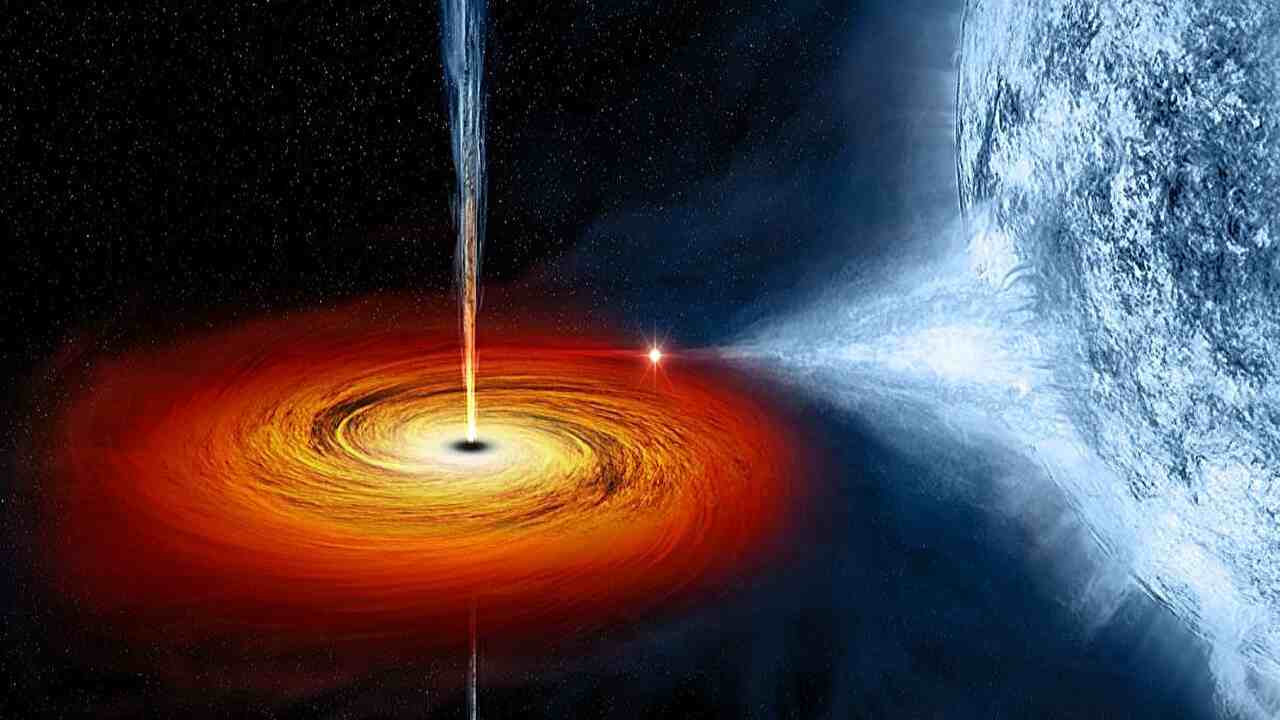An international team led by researchers at Oxford University Physics have proved Einstein was correct about a key prediction concerning black holes. Using X-ray data to test Einstein’s theory of gravity, their study gives the first observational proof that a “plunging-region” exists around black holes: an area where matter stops circling the hole and instead falls straight in.
Furthermore, the team found that this region exerts some of the strongest gravitational forces yet identified in the galaxy. The findings have been published in Monthly Notices of the Royal Astronomical Society.
The new findings are part of wide-ranging investigations into outstanding mysteries around black holes by astrophysicists at Oxford University Physics. This study focused on smaller black holes relatively close to Earth, using X-ray data gathered from NASA’s space-based Nuclear Spectroscopic Telescope Array (NuSTAR) and Neutron star Interior Composition Explorer (NICER) telescopes.
Later this year, a second Oxford team hopes to move closer to recording the first videos of larger, more distant black holes as part of a European initiative.
Unlike in Newton’s theory of gravity, Einstein’s theory states that sufficiently close to a black hole it is impossible for particles to safely follow circular orbits. Instead, they rapidly “plunge” toward the black hole at close to the speed of light.
The Oxford study assessed this region in depth for the first time, using X-ray data to gain a better understanding of the force generated by black holes.
“This is the first look at how plasma, peeled from the outer edge of a star, undergoes its final fall into the center of a black hole, a process happening in a system around ten thousand light years away,” said Dr. Andrew Mummery, of Oxford University Physics, who led the study. “What is really exciting is that there are many black holes in the galaxy, and we now have a powerful new technique for using them to study the strongest known gravitational fields.”
“Einstein’s theory predicted that this final plunge would exist, but this is the first time we have been able to demonstrate it happening,” Dr. Mummery continued. “Think of it like a river turning into a waterfall—hitherto, we have been looking at the river. This is our first sight of the waterfall.”
“We believe this represents an exciting new development in the study of black holes, allowing us to investigate this final area around them. Only then can we fully understand the gravitational force,” Mummery added. “This final plunge of plasma happens at the very edge of a black hole and shows matter responding to gravity in its strongest possible form.”
Astrophysicists have for some time been trying to understand what happens close to the black hole’s surface and do this by studying discs of material orbiting around them. There is a final region of spacetime, known as the plunging region, where it is impossible to stop a final descent into the black hole and the surrounding fluid is effectively doomed.
Debate between astrophysicists has been underway for many decades as to whether the so-called plunging region would be detectable.
The Oxford team has spent the last couple of years developing models for it and, in the study just published, demonstrates its first confirmed detection found using X-ray telescopes and data from the International Space Station.
While this study focuses on small black holes closer to Earth, a second study team from Oxford University Physics is part of a European initiative to build a new telescope, The Africa Millimetre Telescope, which would greatly enhance our ability to make direct images of black holes.
Over 10 million Euro funding has already been secured, part of which will support several first PhDs in astrophysics for The University of Namibia, working closely with the Oxford Physics University team.
The new telescope is expected to enable observation, and filming, for the first time of large black holes at the center of our own galaxy, as well as far beyond. As with the small black holes, large black holes are expected to have a so-called “event horizon,” dragging material from space toward their center in a spiral as the black hole rotates. These represent almost unimaginable sources of energy and the team hope to observe—and film—them rotating for the first time.
The study “Continuum emission from within the plunging region of black hole discs” has been published in Monthly Notices of the Astronomical Society.
Reference: Andrew Mummery et al, Continuum emission from within the plunging region of black hole discs, Monthly Notices of the Royal Astronomical Society (2024). DOI: 10.1093/mnras/stae1160
